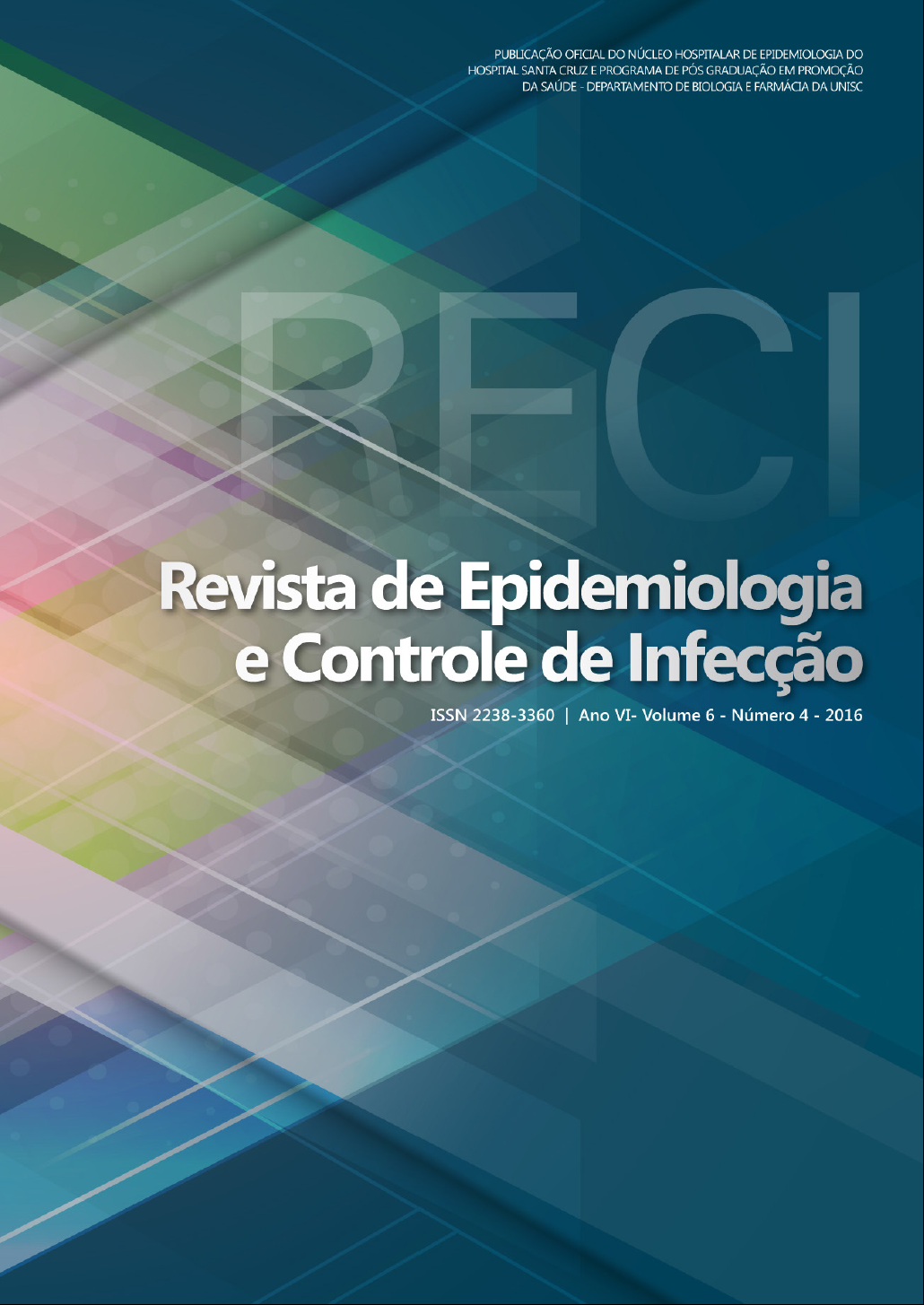Longitudinal prediction of cardiovascular risk of elderly attended in an university health clinic in the city of Santa Cruz do Sul, RS
DOI:
https://doi.org/10.17058/reci.v6i4.8196Abstract
Background and Objectives: The Evolution of cardiovascular risk with advancing age shown high, observing increased mortality. This study aimed to evaluate the prediction of cardiovascular risk in the elderly from anthropometric indicators, blood pressure and glucose levels in the period 2010-2015. Methods: It is based on retrospective analysis of questionnaires given to seniors enrolled in the Project "Promotion of healthy aging: Continuum monitoring of chronic diseases" and evaluated the variables: gender, age, systemic arterial hypertension (SAH), diabetes mellitus (DM), body mass index (BMI), sedentary lifestyle, family history, alcohol consumption, smoking. The conicity index (C index), waist circumference (WC), bloodpressure and blood sugar levels composed the study outcome at the beginning and end of the study. Statistical analysis was performed with SPSS 19.0, using the Mann-Whitney U test for inferential comparison in the five year period 2010-2015 and the Student t test for numerical variables, with significance level of p <0.05. Results: The probability of cardiovascular risk increased over the five years with the largest clustering of risk factors such as hypertension, physical inactivity and obesity, when analyzed simultaneously. It was observed that of the 23 subjects followed up 52% present obesity associated with an underlying disease and 39% associated with two basic conditions. When evaluated over the period of 2010-2015, the study shows a nontrivial decrease in DC. Conclusion: The findings in the study confirm that despite the small number of monitored elderly, C index, the WC,blood pressure and blood glucose are configured as possible mechanisms for monitoring the prediction of increased cardiovascular risk.Downloads
Downloads
Published
How to Cite
Issue
Section
License
The author must state that the paper is original (has not been published previously), not infringing any copyright or other ownership right involving third parties. Once the paper is submitted, the Journal reserves the right to make normative changes, such as spelling and grammar, in order to maintain the language standard, but respecting the author’s style. The published papers become ownership of RECI, considering that all the opinions expressed by the authors are their responsibility. Because we are an open access journal, we allow free use of articles in educational and scientific applications provided the source is cited under the Creative Commons CC-BY license.


